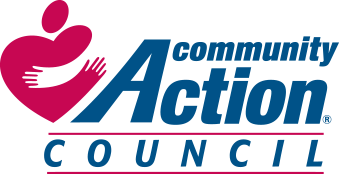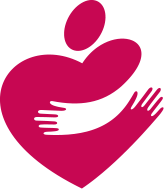The Community Services Block Grant (CSBG) Program represents the consolidation of several federal funding streams originating in Lyndon B. Johnson’s Economic Opportunity Act of 1964. The purpose of these funds, then and now, is to support programs that reduce poverty and address the needs of people with low income. CSBG funds, which totaled $770 million in FY 2016, are administered through the U.S. Department of Health and Human Services, Office of Community Services.
Among the eligible recipients of these funds are community action agencies (CAAs)—a nationwide network of independent bodies that were first organized in the 1960s for the purpose of addressing poverty at the local level. As the designated CAA for Fayette, Bourbon, Harrison, and Nicholas Counties, Community Action Council is responsible for bringing federal CSBG funds into our community and seeing that they are used for activities that alleviate the causes and conditions of poverty here. The Council must remain accountable both to federal and state oversight and to the community at large, even as it works directly every day with the people most affected by high-level policy decisions.
The term “block grant” means that funds are allocated in a lump sum from the federal government to state governments—the exact amount is determined by a formula, based on an estimate of the need in each state relative to others—along with broad parameters on how the funds are to be spent. In the case of CSBG, states must use the funds to support CAAs, local governments, and a limited number of other organizations that address poverty by tackling key areas such as employment, education, housing, health, or emergency services. The premise behind block granting is that each local community is in the best position to know how to use its allocated funds to make the most impact. As independent non-government agencies, CAAs like the Council make it part of their mission to include people with low income in all aspects of their operations and leadership—ensuring that they stay directly in touch with how poverty manifests in their community in real time.
In the case of a broad, multifaceted social issue such as poverty, this funding structure has some advantages. Poverty looks different in different parts of the country due to geographic variables, location-specific industries, demographic trends, and historical legacies. For example, some communities may have an urgent need for services addressing substance use disorders and their social fallout; others might have infrastructural challenges related to depopulation, and urban decay; in still others, services to immigrant and refugee families may be more of a priority. Ideally, block grant funding would enable greater autonomy at the local level, meaning that communities are equipped to shift their programming rapidly and creatively in response to changing circumstances.
Unfortunately, in reality things are different. The block grant funding structure leaves programs highly vulnerable to decision-making at the level of both the federal and state governments. The Washington-based Center on Budget and Policy Priorities has shown how, historically, federal funding for block-granted social services programs has declined steeply since the programs’ inception, even as need has demonstrably risen. At the state level, legislators facing multiple competing priorities and political pressures are easily tempted to shift these reliable federal dollars into other categories to patch up budget shortfalls. Being such a vulnerable target, these funds tend to erode over time due to the cumulative effects of various spending freezes and cuts.
A major stumbling-block here is that high-level decision-makers, far from the front lines, are not always able to see the benefits of activities that do their best work at the local level. CSBG-funded projects vary so widely in nature that it can be hard to capture and document their results in a standardized, one-size-fits-all fashion. This is because, under the broad “anti-poverty” umbrella, they work in a number of ways—as is to be expected, since poverty is a complex condition with many interrelated causes and effects.
Some CSBG activities focus on reducing suffering and improving day-to-day living conditions for people living in poverty—particularly vulnerable people such as children, seniors, and those with disabilities.
Others focus on relieving the financial burdens on working families whose wages are simply not sufficient to meet the rising costs of housing and other basic living expenses.
Some CSBG programming focuses on the long-term mission of helping youth overcome an under-resourced background and transition successfully to adulthood, careers, and postsecondary education—crucial work for breaking the cycle of generational poverty, but not always translatable into instant reduction of the poverty rate.
Moreover, the fact that CSBG programs often employ innovative approaches to addressing poverty—just as the block grant structure is designed to enable them to do—means that experts cannot always easily agree on the best way to measure their effects. Even the exact same program may be differently implemented across the country due to differences in available resources, partnership networks, and the personal skills of individual service providers. In the meantime, it becomes all too easy for high-level government to conclude that these programs have a “limited impact,” and threaten to cut funding yet again.
While we know that CSBG-funded programs deliver powerful results, their impact is sometimes best shown not in large summary spreadsheets and reports, but in individual stories. The Council is making an effort to put more of a face on CSBG programs and their day-to-day impact. After you have seen these stories, we hope you will support us in resisting/fighting proposals to eliminate CSBG.

